Baking pan vs sheet are both essential tools for baking various sweet and savory dishes. A baking pan typically has high sides and is used for baking items such as cakes, casseroles, and lasagna. Baking sheets, on the other hand, are flat and have a shallow rim or no rim at all. They are ideal for baking cookies, biscuits, and other flat baked goods.
When choosing between a baking pan and a baking sheet, it's important to consider the recipe and the desired outcome. If you're baking a dish that needs to be contained, such as a casserole or a cake, a baking pan is the way to go. The high sides of the pan will help the dish cook evenly and prevent any spillage or overflow. Most baking pans are made of metal, glass, or ceramic, and they come in various shapes and sizes, including round, square, rectangular, and oval.
On the other hand, if you're baking something that needs to be spread out, such as cookies or biscuits, a baking sheet is the better option. Baking sheets are typically made of metal, either aluminum or stainless steel, and can come in various sizes, including half-sheet (18x13 inches), quarter-sheet (13x9 inches), and jelly-roll (15x10 inches). Baking sheets are also versatile and can be used for roasting vegetables, toasting nuts, and even making pizza.
It's important to note that there are some recipes that can be baked in either a baking pan or a baking sheet, depending on the desired outcome. For example, brownies can be baked in either a baking pan for thick and fudgy brownies or a baking sheet for thin and crispy brownies.
In summary, choosing between a baking pan vs sheet comes down to the recipe and the desired outcome. Baking pans are best for dishes that need to be contained, while baking sheets are ideal for flat baked goods. Ultimately, having both a baking pan and a baking sheet in your kitchen will allow you to tackle any baking recipe with ease and achieve the perfect results every time.
Blog Series: A Beginner's Guide for what baking pan can be used for
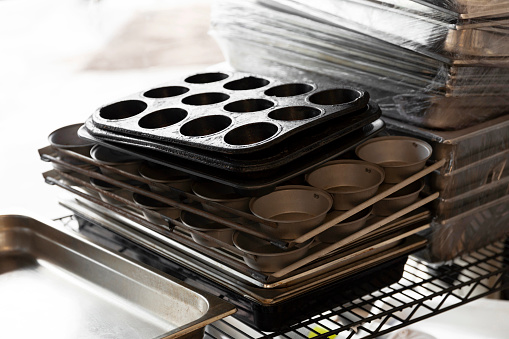
What are baking pan vs sheet?
Baking pan vs sheet is not only essential tools for any baker but also play a vital role in determining the final outcome of your baked goods. A baking pan is a flat, rectangular, or circular-shaped kitchen equipment that is primarily used for baking cakes, brownies, casseroles, lasagnas, and other dishes that require depth. In contrast, baking sheets are flat, shallow, and primarily used for baking flat items like cookies, biscuits, and other baked goods.
Baking pan vs sheet come in different shapes and sizes, and each shape serves a unique purpose. For instance, round pans are commonly used for baking layered cakes, while square or rectangular pans are ideal for baking brownies or casseroles. Oval pans, on the other hand, are perfect for baking chicken or beef roasts.
Baking pan vs sheet is made from various materials such as aluminum, stainless steel, glass, and silicone. Each material has unique properties that make it suitable for specific types of baking. Aluminum is a popular choice for baking pans and sheets because of its excellent heat conductivity, which ensures even baking and browning. Stainless steel is durable, long-lasting, and can withstand high temperatures. Glass baking dishes are ideal for slow, even cooking, while silicone mats are non-stick and easy to clean.
When choosing a baking pan or sheet, it's important to consider the recipe and the desired outcome. The size and shape of the pan can significantly affect the final result of your baked goods. For example, using a smaller pan can result in a thicker, more dense baked good, while using a larger pan will result in a thinner, more spread-out baked good. The material of the pan also affects how the food cooks and browns, so it's essential to select the appropriate material for your recipe.
In conclusion, baking pans and sheets are essential tools for any baker, and choosing the right one is crucial for achieving perfect results. Whether you're making cakes, cookies, bread, or other baked goods, there is a baking pan or sheet that's perfect for your recipe. Consider the shape, size, and material of the pan or sheet to ensure the best outcome for your baked goods.

Differences Between Baking Pan VS Sheet
In addition to their size and shape, there are a few other differences between baking pan vs sheet.
One key difference is their intended use. Baking pans are typically used for baked goods that require some depth, such as cakes, brownies, casseroles, and lasagnas. The higher sides of a baking pan help to contain the ingredients and prevent them from spilling over during baking. Baking sheets, on the other hand, are ideal for flat baked goods such as cookies, biscuits, and sheet cakes.
Another difference is the type of material they are made from. Baking pans can be made from a variety of materials, including aluminum, stainless steel, cast iron, and ceramic. Each material has its own unique properties, such as heat distribution and durability, which can affect the outcome of your baked goods. Baking sheets, on the other hand, are typically made from aluminum or stainless steel, which are both good conductors of heat and allow for even baking.
When it comes to cleaning, baking sheets are typically easier to clean than baking pans. Baking sheets are flat and have no corners or crevices, making them easy to wipe clean or wash in a dishwasher. Baking pans, on the other hand, can be more difficult to clean due to their shape and the potential for food to get stuck in the corners.
In summary, the main differences between baking pan vs sheet is their size and shape, intended use, material, and ease of cleaning. By understanding these differences, you can choose the best option for your specific baking needs and achieve the perfect results every time.
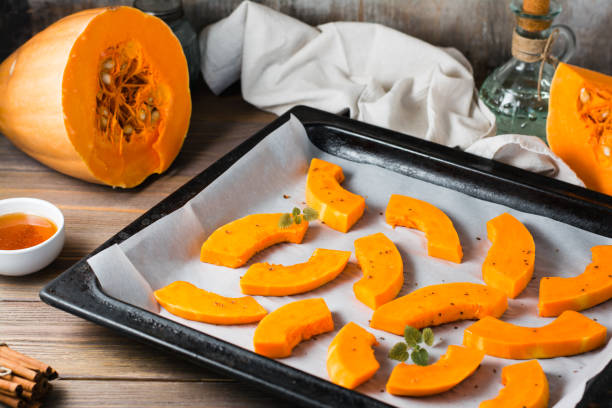
Material Of Baking Pan VS Sheet
When it comes to material,Baking Pan vs Sheet can vary greatly. Baking pans are often made of heavy-duty materials like stainless steel, aluminum, or cast iron. These materials make them more durable and long-lasting, and they can withstand high temperatures and repeated use. They also tend to distribute heat more evenly, ensuring that your baked goods cook evenly throughout.
On the other hand, baking sheets are often made of lighter materials like aluminum or silicone. These materials make them easier to handle and more versatile for a wider range of recipes. However, they may not be as durable as baking pans and may warp or bend over time, especially with frequent use. They also tend to be more prone to hot spots, which can cause your baked goods to cook unevenly.
It's important to consider the material when choosing between a baking pan and sheet, as it can have a significant impact on the quality of your baked goods. Some recipes may require a specific material to achieve the desired texture or browning. For example, a cast iron skillet may be preferred for making a crispy crust on a pizza, while a non-stick aluminum baking sheet may be best for making perfectly golden cookies.
In summary, while baking pans are typically made of heavier materials for durability and even heating, baking sheets are often made of lighter materials for versatility and ease of use. The choice of material can depend on the recipe and the desired outcome, so it's important to consider your specific baking needs before choosing a baking pan or sheet.
Blog Series: A Beginner's Guide for carbon steel cookware vs cast iron cookware
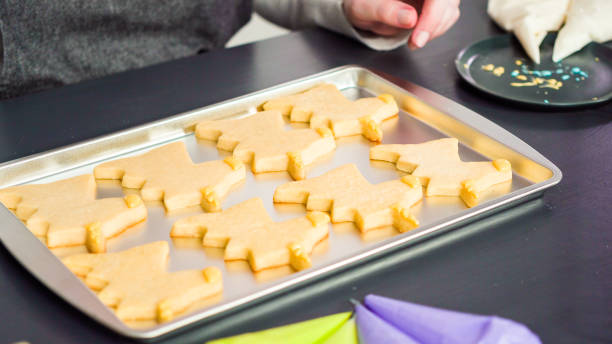
Functionality Of Baking Pan VS Sheet
In addition to the differences in size, shape, and material, baking pans and sheets also have different functionalities. Baking pans are designed to hold more batter or dough, making them perfect for baking cakes, bread, and other baked goods that require a deeper container. The higher sides of baking pans help contain the batter or dough, preventing it from spilling over the edges during baking. Baking pans are also great for making dishes that require a sauce or liquid, such as lasagna or casseroles, as the high sides help contain the sauce and prevent it from spilling out.
Baking sheets, on the other hand, are designed for baking cookies, biscuits, and other flat baked goods. They have a flat surface and shallow sides, making them ideal for spreading out dough or batter to achieve even baking. Baking sheets are also great for making sheet cakes, jelly rolls, and thin-crust pizzas.
It's important to note that some recipes may require the use of both baking pans and sheets. For example, a recipe for a layered cake may require baking the cake layers in round or square baking pans, while also using a baking sheet to make a layer of thin, crispy meringue for decoration.
In summary, the functionality of baking pans and sheets depends on their size, shape, and material. Baking pans are ideal for deeper baked goods and dishes with sauce, while baking sheets are perfect for flat baked goods and thin crusts.
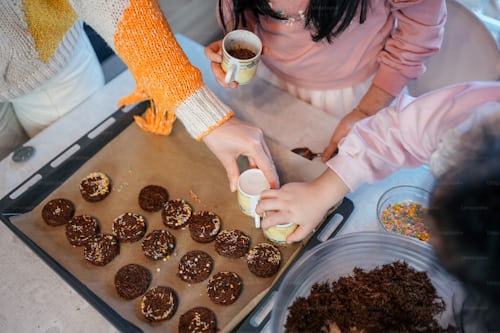
Heat Distribution Of Baking Pan VS Sheet
Heat distribution is an important factor to consider when choosing between baking pans and sheets. Baking pans are designed to distribute heat evenly throughout the dish, ensuring that the entire baked good cooks at the same rate. This makes them ideal for recipes that require an even bake throughout, such as cakes and bread.
On the other hand, baking sheets tend to heat up more quickly than baking pans. This can be an advantage when baking certain types of flat baked goods, such as cookies and biscuits, as it allows for a crispy exterior while keeping the center soft and chewy. However, it can also cause the edges of the baked goods to overcook or burn if not monitored closely.
The material of the baking pan vs sheet can also affect heat distribution. Aluminum and stainless steel are good conductors of heat and distribute it evenly, making them popular choices for baking pans. Glass, on the other hand, is a poor conductor of heat and can result in uneven cooking. Silicone baking mats, while non-stick and easy to clean, may not provide as even heat distribution as metal baking sheets.
When selecting a baking pan vs sheet, it's important to consider the recipe and the desired outcome. A deeper baking pan with even heat distribution is ideal for cakes and bread, while a lighter baking sheet is better suited for cookies and biscuits.
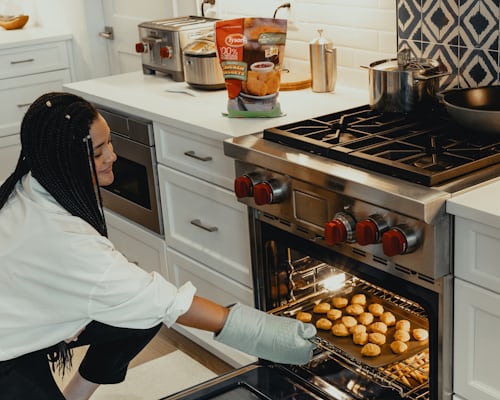
Clean up Of Baking Pan VS Sheet
When it comes to cleaning baking sheets and pans, there are a few things to keep in mind. Firstly, it's important to allow the pans to cool down completely before attempting to clean them. This can help prevent warping or damage to the pan.
As mentioned, baking sheets are generally easier to clean due to their flat, crevice-free design. However, some baking sheets may be prone to warping or staining over time, which can make them more difficult to clean. To prevent warping, avoid exposing the sheet to sudden temperature changes, such as running it under cold water while it's still hot.
Baking pans, on the other hand, can be more difficult to clean due to their deeper shape and corners. If food or batter becomes stuck in the corners, it can be tricky to remove. To make cleaning easier, try using a soft-bristled brush or sponge to scrub the corners gently.
Many baking pans now come with non-stick coatings, which make cleaning a breeze. However, it's important to follow the manufacturer's instructions when cleaning these pans to prevent damaging the coating. Avoid using abrasive sponges or harsh cleaning products, which can scratch the coating and reduce its effectiveness.
Overall, baking sheets are generally easier to clean than baking pans. However, the ease of cleaning can depend on the design of the pan or sheet, as well as any coatings or finishes that are applied. Regardless of which type of pan or sheet you're using, it's important to clean them thoroughly after each use to prevent build-up of food or grease, which can affect the performance of the pan over time.
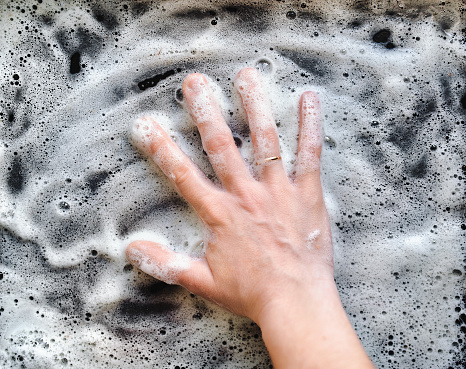
Conclusion Of Baking Pan VS Sheet
In conclusion, both baking pan vs baking sheet have their own unique features and are ideal for different types of baked goods. If you're making cakes, bread, or other dishes that require a deeper container or sauce, then baking pans are the way to go. On the other hand, if you're baking cookies, biscuits, or other flat baked goods, then baking sheets are the better choice.
It's always a good idea to consult the recipe you're following to determine which type of pan to use. Some recipes may specify a particular type of pan for best results. Additionally, you can experiment with both types of pans to see which one works best for you and your baking style.
Ultimately, successful baking comes down to using the right equipment, following the recipe carefully, and taking your time. Don't be afraid to try new things and make adjustments as needed. With practice and patience, you'll be baking like a pro in no time!
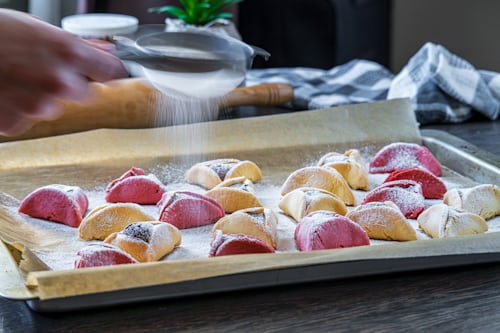
Top 5 FAQS Of Baking Pan VS Sheet
1) Baking Pans and Cookie Sheets
Although cookie sheets are often referred to as "baking sheets," there is a difference. Baking pans have rolled edges, and cookie sheets do not. Cookie sheets offer the advantage of a large surface area ideal for holding a large number of cookies.
2) What is the difference between a baking sheet and a baking pan?